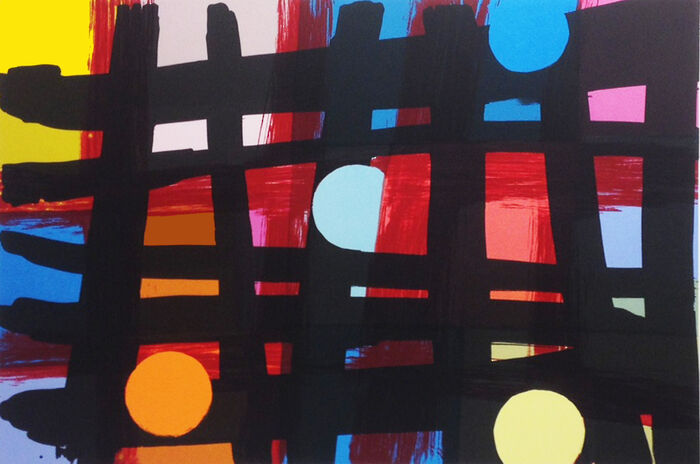Stanley Kubrick: The Exhibition holds mythical Kubrick in every crevice
The Design Museum’s exhibition is cleverly curated, mirroring the directorial process of Kubrick’s own work

There is little need to recommend or even directly review the Design Museum’s Stanley Kubrick exhibition – the exhibition’s few remaining days are almost sold out and a wealth of thorough reviews (plus Steven Spielberg’s resounding recommendation) shower its curation with well-deserved praise. In short, if you’re feeling the nagging pressure to use the holiday for cultural consumption, seize any remaining chance to see the Kubrick exhibition.
The exhibition slips past the instinct to conduct an internal running commentary and into the blend of sensation and information that characterises remarkable curation. That said, when this effect is produced by an exhibition that is – at first glance – as unusual as the one at hand, one begins to wonder whether some mystical quality of Kubrick is at play amongst the myriad props and sketches.
...the blend of sensation and information that characterises remarkable curation.
This is remarkably neither an exhibition of the director’s works of film themselves, nor even of Kubrick as an individual. The former would be better conducted in a cinema of course, and the exhibition’s large screens and dark rooms are pointedly the only sections which are optional asides. But more striking is the absence of the latter: quotes from Kubrick are used sparingly and only where substitution would be impossible; photos and videos of him seem minimised; the director’s face is often a mere foreground to the elements of a photo stressed by the exhibition’s wall texts.

As critics have pointed out, the success of the Kubrick exhibition lies in its mirroring of the directorial processes and aims of Kubrick’s own work. The exhibition aims towards an impression of Kubrick, towards a distinct and forceful presence of the director, hovering at the periphery of each accepted and rejected sketch or design we are shown. However, much as Kubrick is outstanding in the emergent tones and aesthetics of his films, films of measured pace and light-handed thesis, the exhibition is content to have this sensation of Kubrick as life-art stay in the exhibition’s negative space. The rather curious choice of the Design Museum as venue for the exhibition restrains the visitor’s expectation for an explicit claim about the work or myth of Kubrick, instead reinstating a relaxed curiosity about the props and filming equipment (both original and convincingly recreated) that saturate the exhibition space.
In exhibiting the construction and working character of Kubrick, the exhibition overcomes an imposing hurdle: how to tackle his monolithic mythology – or for that matter the entire archetype of the ruthless genius director. The portrait of the director that we are encouraged to conjure in the spaces between what we see permits resolution, ambiguity, and nuance impossible in a more direct approach, all the while celebrating the independently compelling works of a host of artists and designers involved in Kubrick’s films. The exhibition of course emphasises Kubrick’s fascination with London and painstaking love of design, but its arrangement, linear yet non-chronological, showcases the construction of the myth of Kubrick. In this sense it feels most sincere to see the exhibition as a foray into the nebulous realm of life art.
...it feels most sincere to see the exhibition as a foray into the nebulous realm of life art
The exhibition presents Kubrick’s early fascination with the taboo through more mainstream crime and war films, reaching a fever pitch in the section dedicated to Full Metal Jacket, where judiciously cut clips of Kubrick’s directorial instruction show the emergence of a recognisably meticulous Kubrick. The curation never shuns or flatly ignores the cult of personality surrounding the image of Kubrick’s directorial character, but nor is it uncritical of this image. Its emphasis on Kubrick’s refusal to leave London for filming does more than justify it geographically. It highlights the director’s limitations and, his willingness to compromise on the goal of absolute rigour because of his own anxieties surrounding travel – a far cry from the creative automaton of myth.
Curator Adriëne Groen does more than highlight the artifice of Kubrick’s life art – she participates in and enriches it, with a portrayal of Kubrick that acknowledges the complexity and variety of an enormously renowned directorial process.
After leaving the museum, the spectacle of the exhibition lingered, and threaded through that sensation of awe was a realisation that I had seen something essentially invisible, that I had in some way witnessed the very process of directorial choice – the mass of factors – practical, aesthetic, surprisingly banal, and admittedly some still mystical – swirling in each selection and rejection. What better portrait of a figure obsessed with the communication of the intangible that the achievement of just that.
Stanley Kubrick: The Exhibition is open at the Design Museum until Tuesday 17th September.
 Features / Should I stay or should I go? Cambridge students and alumni reflect on how their memories stay with them15 December 2025
Features / Should I stay or should I go? Cambridge students and alumni reflect on how their memories stay with them15 December 2025 News / Cambridge study finds students learn better with notes than AI13 December 2025
News / Cambridge study finds students learn better with notes than AI13 December 2025 News / Dons warn PM about Vet School closure16 December 2025
News / Dons warn PM about Vet School closure16 December 2025 News / News In Brief: Michaelmas marriages, monogamous mammals, and messaging manipulation15 December 2025
News / News In Brief: Michaelmas marriages, monogamous mammals, and messaging manipulation15 December 2025 Comment / The magic of an eight-week term15 December 2025
Comment / The magic of an eight-week term15 December 2025









